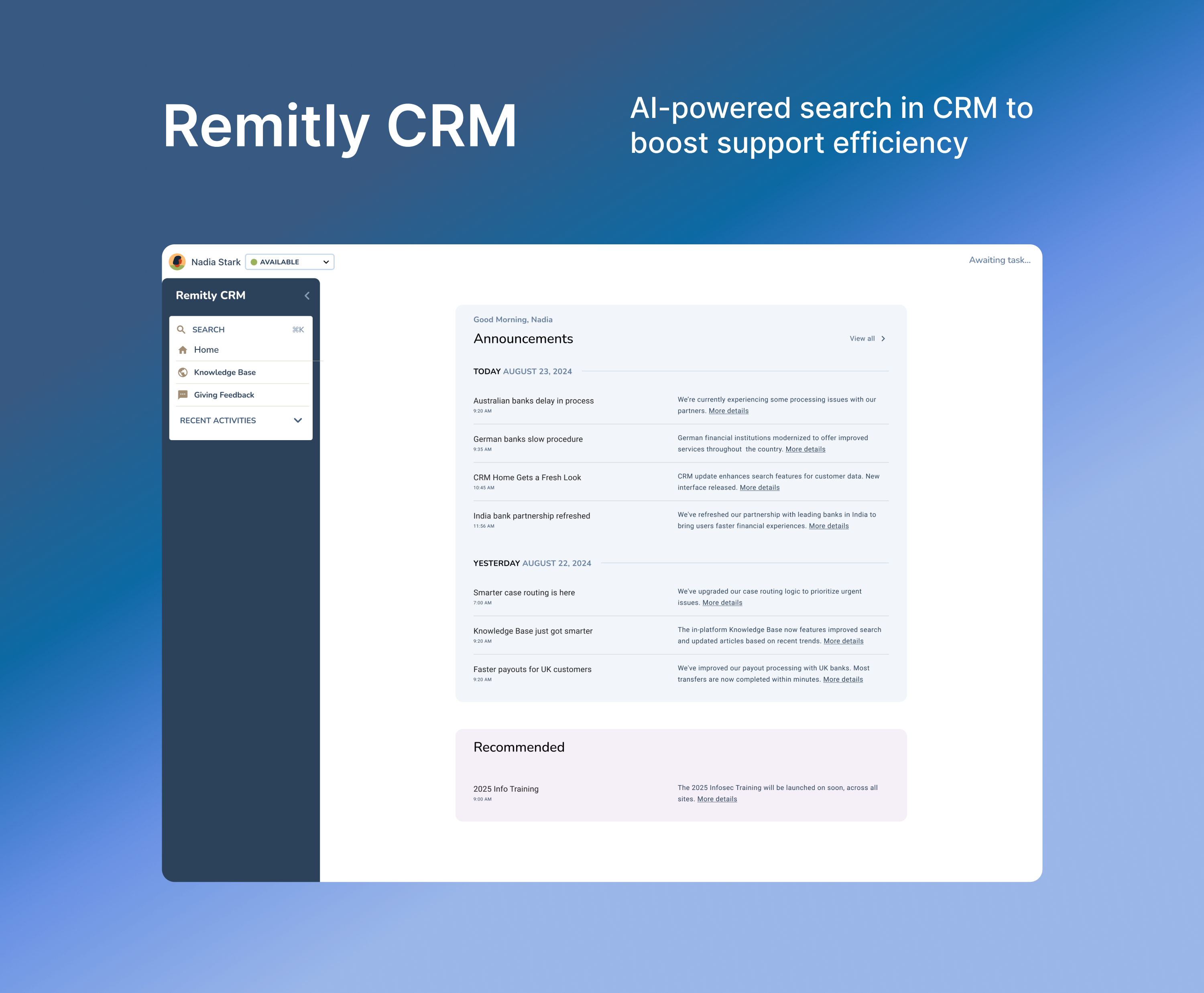

Designed the CRM Home and Global Search experience to optimize agent workflows, reduce time and enable faster access to the right customer data and tools.
As a Lead Product Designer on the CS team, I partnered with PMs, engineers, and CS stakeholders to lead the design of scalable, personalized tools that support customer success agents globally.
Nov 2024 - Jan 2025
Product Designer (me)
Product Manager
Engineers
UX Design, Visual Design, Research,
Design system, Usability Testing, Cross-functional Facilitation, Stakeholder Interviews
Improved agent engagement, speed and confidence through scalable, AI-powered search, setting the foundation for a more efficient global support operation on Home.
↓ 30%
Reduced search time for agents by over 30%
↑ 3000+
Increased content accuracy and ownership from internal teams. Set a new design standard adopted by 3000+ agents globally
↑ $9M
Directly drive the company value by $9M using new tools. Improved confidence scores in agent NPS surveys
Agents are hard to engage in one CRM due to a fragmented CRM experience, no Home, and broken search.
Agents struggled to find the right updated customer support information quickly. Internal audits showed that over 40% of case resolution time was spent searching across disconnected tools and systems.

Competitive analysis reveals that successful CRM platforms consistently balance three critical elements:
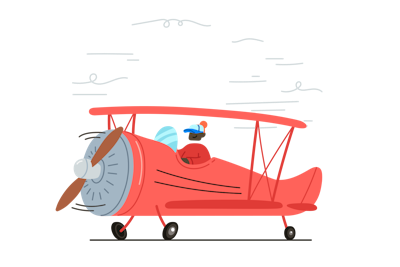

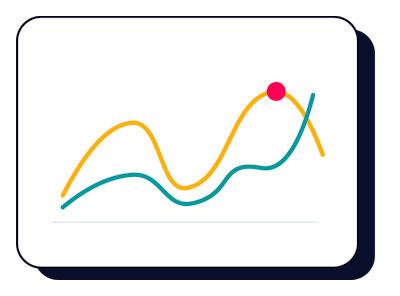
Search speed
Result accuracy
User interface simplicity
I led the user research. After interviewing 15 agents, observing workflows, and leading focus groups across three continents, I uncovered key patterns:
Inefficient navigation: Agents spent significant time switching between tools to gather customer context, slowing resolution time.
Inconsistent search results: Search behavior was unpredictable, often returning irrelevant or outdated data.
Lack of prioritization: Agents lacked a clear, actionable starting point when logging into the CRM, leading to confusion and task backlog.
Information overload: The interface surfaced too much low-priority data, making it harder for agents to focus on what mattered most.
I aligned with the PM and engineer, then split the work into two core areas: Home and Search. Each required a foundation of shared patterns but solved distinct problems.
Global Search Design Principles:
1. Action-oriented: surface tasks and recent cases at a glance
2. Modular: allow flexible section updates as workflows evolve
3. Regionalized: easilly access different tasks
1. Fast and forgiving
2. Relevant across personas and products
3. Intuitive results grouping by type (user, case, KB, transactions)
Announcements: A must-read section that keeps agents informed with daily updates.
Search: Used multiple times per call. It's critical for fast, accurate issue resolution.
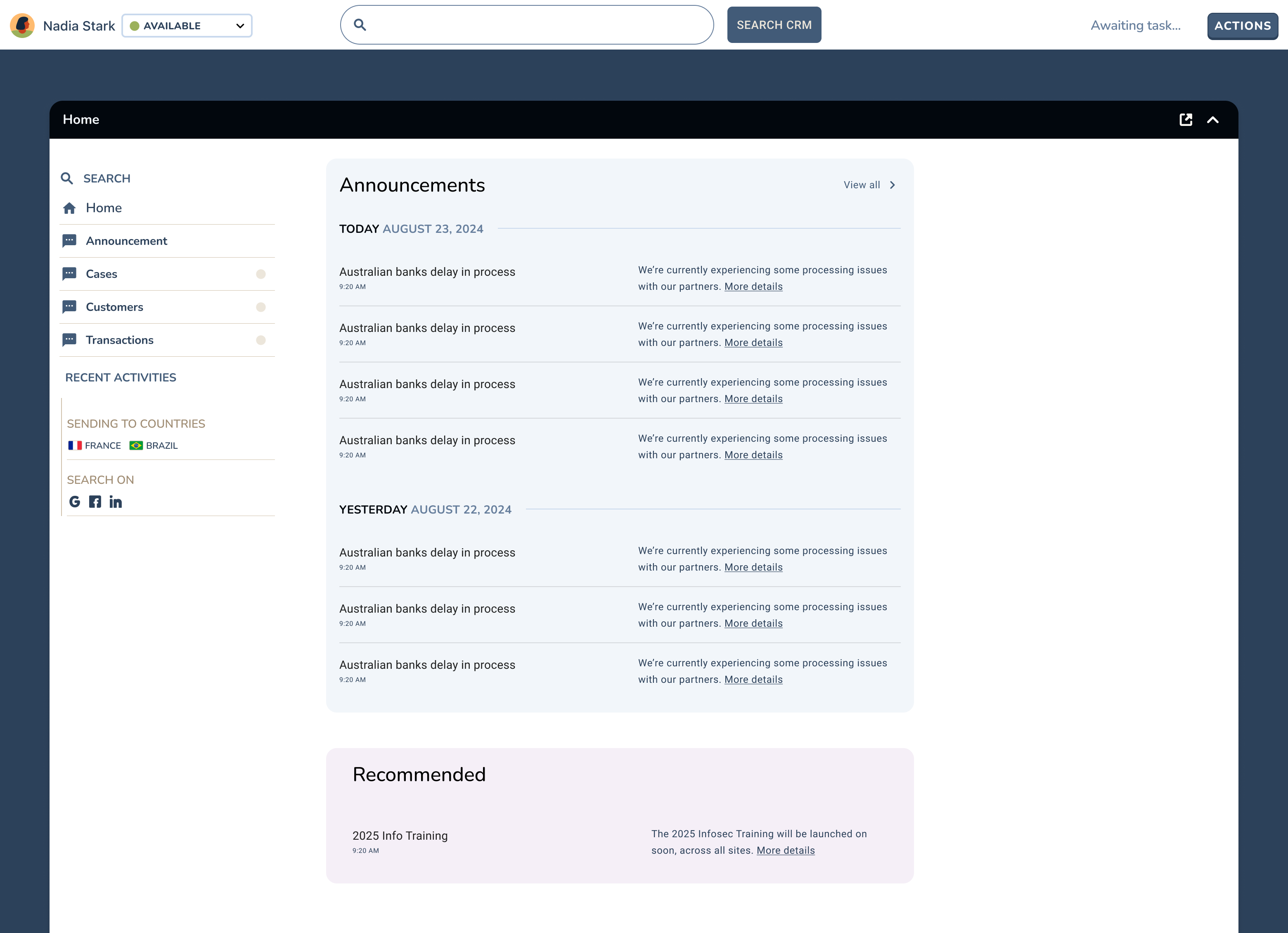
Announcements

Search

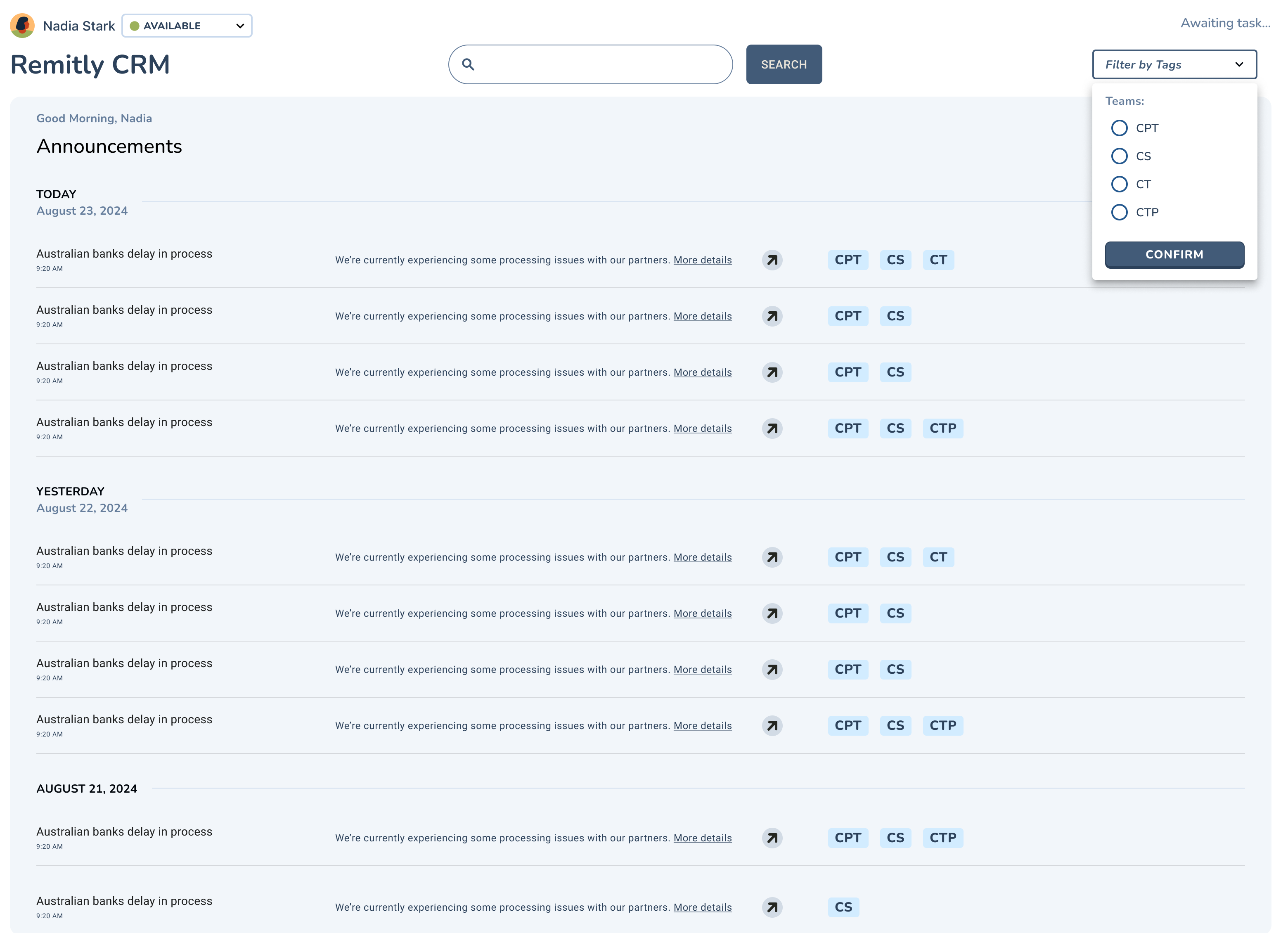
Tech constraints: Cannot show different categories in tight timeline.
Align priorities with PM: We can solve surface most important first, announcement & search.
"Today” and “Yesterday” labels, followed by infinite scroll for older updates, which enhances clarity and daily readability.

✅
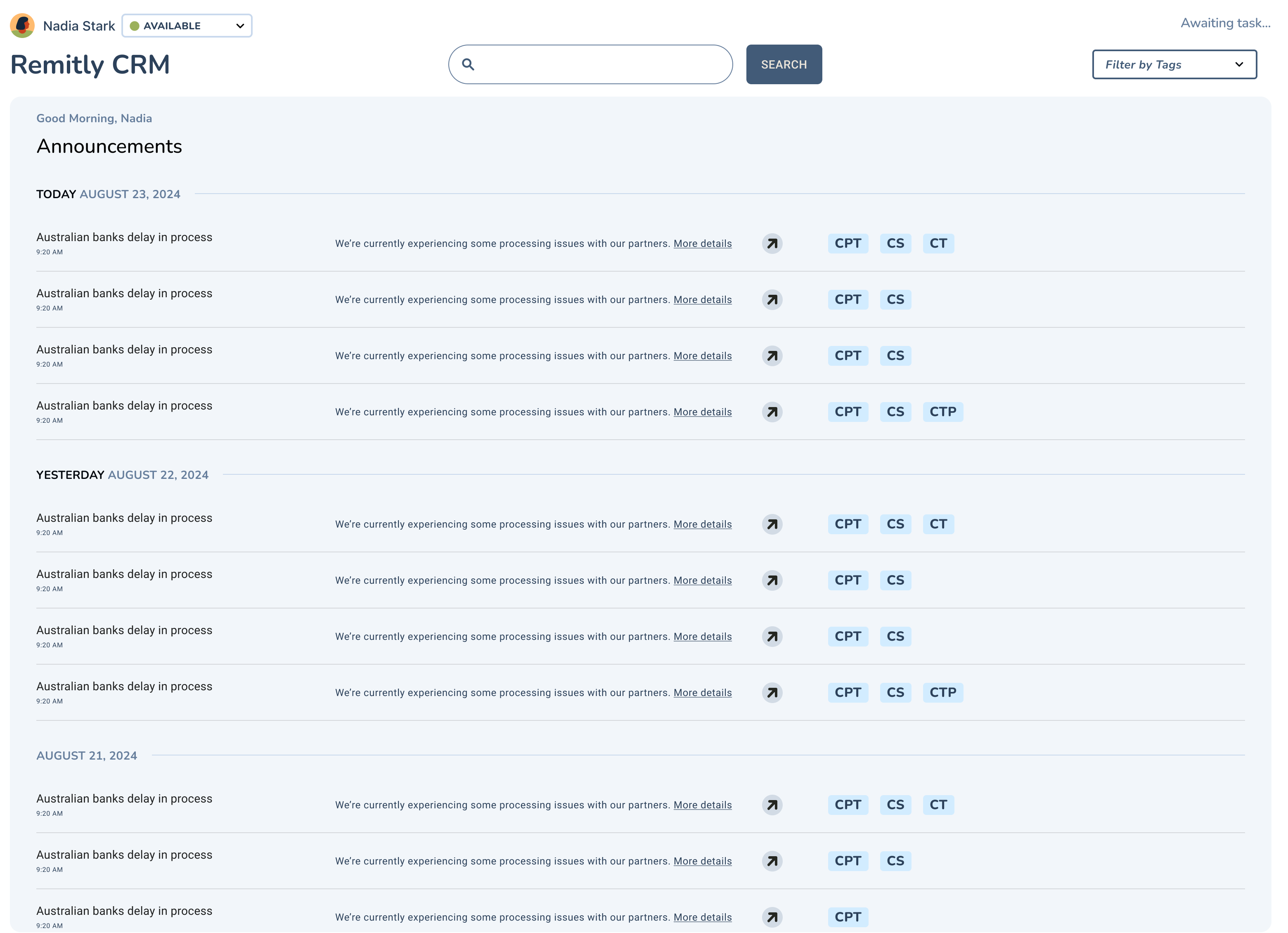
Side bar option get the most satisfaction score from users

Iteration - Clear hierarchy and quickly access search in Nav bar
✅
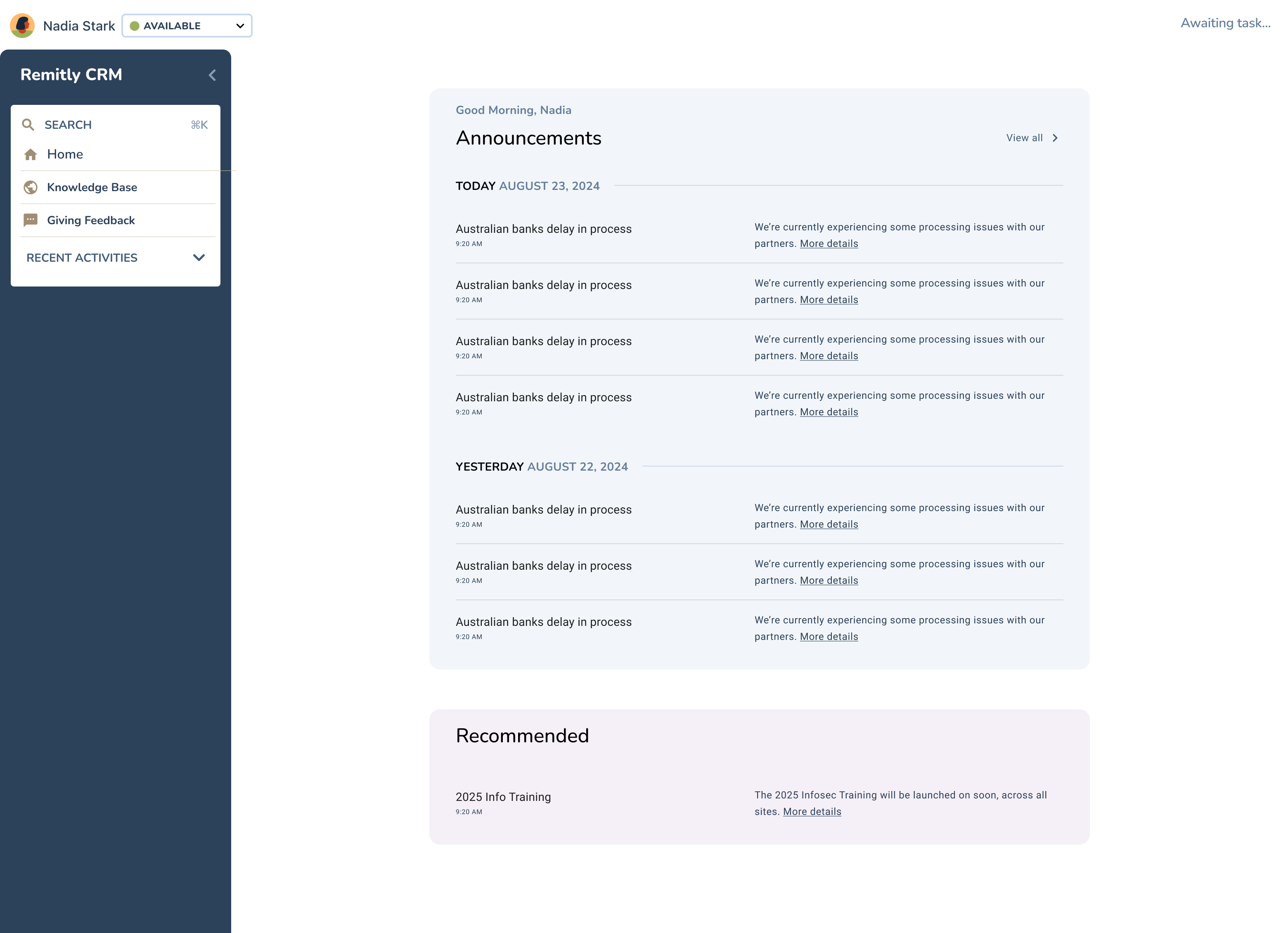
Building on these insights, I rapidly prototyped and tested a range of design directions, focusing on scalable improvements to search relevance, task visibility, and interface clarity across diverse agent workflows.
At the end, I validate my assumption by usability testing, adding side bar to help quick navigate.
✅ Sidebar offers quick access to essential workflows, like search.
✅ Announcements are a key daily touchpoint, keeping agents informed on critical updates.
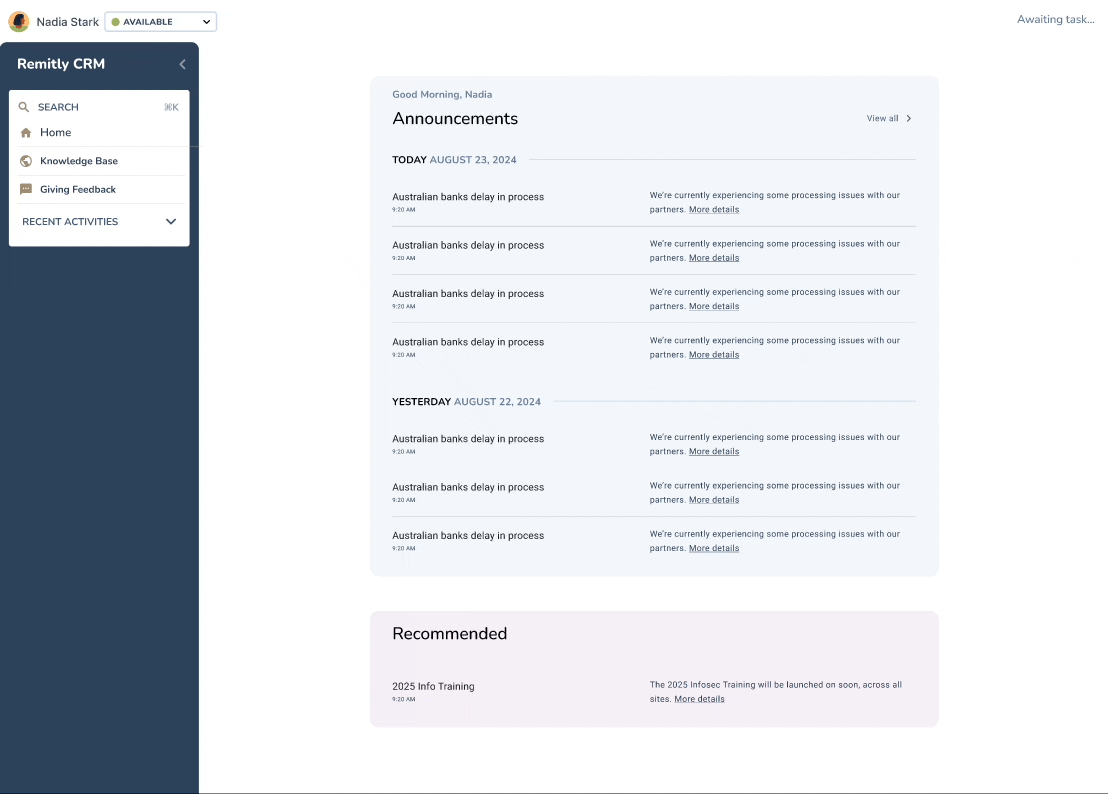
✅ Slide-in panel allows agents to view announcement details without opening new tabs, reducing context switching and improving efficiency.
✅ Infinite scroll ensures older announcements remain easily accessible, supporting long-term visibility and reference.

Use usability testing to validate assumptions.
When exploring multiple directions or navigating ambiguity with different stake holders voices, usability testing is a good way to find what's the best for the user.
Hold regular meetings with key stakeholders.
When moving fast, organizing regular meeting to maintain a tight feedback loop and ensure alignment throughout the design process.
Be willing to take risks when clarity is limited.
Innovative solutions often emerge from bold ideas, and taking calculated risks can help move projects forward in uncertain situations.